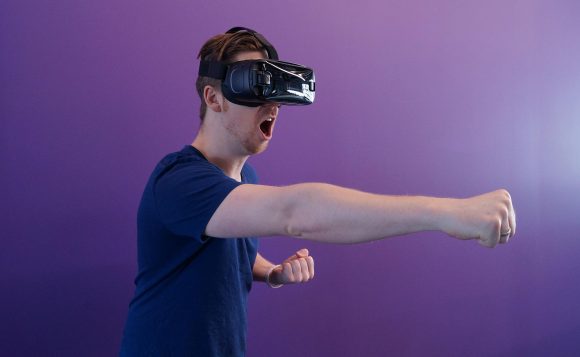
Nowadays, a big number of hospitals and rehabilitation centers are already applying virtual reality as the way to provide patients’ recovery. It helps to improve recovery rates, gives patients more motivation, and creates controlled and safe space during the practice.
In this blog post, we will tell you more about interesting solutions in virtual reality training, their advantages, and fields where this kind of training is applied.
Fields where VR physical recovery is applied
Generally, VR technology is created for patients, who are recovering after stroke and serious injuries. The ones who suffer from chronic pains and ones who get through chemotherapy get their own VR treatment too.
VR training for stroke survivors are designed to develop self-care habits and improve the control of disease consequences.
For patients with chronic pain, VR is a coping mechanism, which helps to distract a person’s attention from the pain and slowly overcome discomfort, using immersion in a virtual adventure.
Patients who are on the mend after wounds and injuries have their own VR therapy not only to reduce the pain, but for full or partial resumption of wounded muscle or limb’s capacity.
VR training is also applied for cancer patients who get through chemotherapy. Passing games in virtual reality helps to improve memory, common well-being, and distracts from painful discomfort. VR therapy serves as a relieving factor which diverts from chemotherapy side effects such as vertigo, fatigue, vomiting, general weakness, etc.
VR industry advantages in patients’ recovery
As a supplement to a traditional offline training program, VR therapy has a lot of advantages, including:
- increasing brain’s work and its cooperation with limbs with the help of special head equipment during the therapy;
- chronic pain relief — after VR therapy, chronic pain level in patients was proven to decrease by 33%;
- due to the gaming format and immersion effect of virtual reality, patients become more motivated during the practice;
- controlled and safe environment of the training;
- improving patients’ recovery rates, compared to traditional offline therapy — according to the Recovery company statistics, patients improve their motorics during VR exercises by 20% more than during offline therapy. Also, patients with motor impairment recover by 15% faster after VR training;
- instant and detailed feedback, which is shown up after passing game level in the shape of a tournament table. VR games are a convenient way to monitor a patient’s progress. The results of every game are automatically recorded in the database, which significantly facilitates patient’s health condition tracking.
Rehabilitation apps for stroke survivors
Many great companies have developed different VR programs specifically for patients who recover from stroke and injuries and work at improving their own bodies’ motorics.
MindMotion Go by MindMaze is already used by more than 3000 patients in 90 rehabilitation centers. This program is intuitive, adaptive, and has 17 types of exercises for arms, legs, head and back muscles, etc. Every exercise is made as a 3D arcade, which makes monotonous training more interesting.
Also, patients can use MindMotion Go at home. They can make their own exercise program, have unlimited time for training, and periodic video conferences with doctors.
Recovery App develops a bunch of physiotherapy and chronic pain relief apps. Specialists have designed a VR therapy for those who suffer from complex regional pain syndrome, chronic and phantom limb pain. These apps are made for restoration of sensitivity, distraction from pain, and breaking the pattern of constant pain and injury fear. Also, the company has announced programs for pain relief and increasing body movement control.
RealSystem also offers a gamified VR rehabilitation. For example, in Happy Valley patients help penguins to harvest, go fishing, build houses and do other tasks, as well as make the sun rise in their village. The main target of this program is to restore physical and cognitive habits. Another program, Music in Motion makes patients develop upper body muscles by rhythmical movements, accompanied by music in a candy land, small coast town, and other locations. All RealSystem programs are available as free demos.
Time after time, VR technology proved its efficiency at recovering patients with diseases of the musculoskeletal system. These technologies do not just fasten the recovery, but serve as a good addition to traditional offline exercises. Also, VR technologies enable patients to determine the training schedule and adjust the complexity level of exercises.



